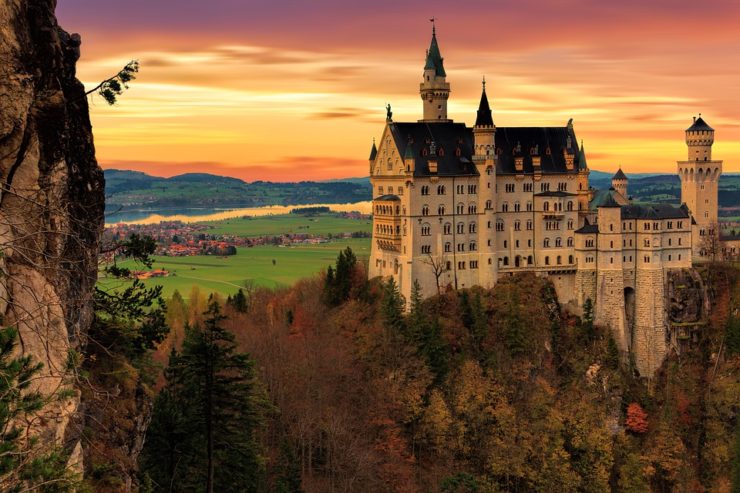Castles have been a source of fascination for me since I was a child, and have captured the imaginations of countless generations with their grand scale and extravagant beauty. Castles are some of the finest representations of creativity the world have ever known, and through the years castle architecture has evolved drastically.
Come with me to take a peek at some of the most magnificent castles in the world!
Neuschwanstein Castle; Bavaria, Germany

A stunning example of a castle with a more modern flavor, Neuschwanstein Castle sits atop a mountain in southwest Bavaria, in Germany. It isn’t a true castle in the strictest sense, but rather more of a royal palace that was built in the Romanesque Revival style. It was commissioned by Ludwig II of Bavaria as a retreat, and was a getaway home for King Ludwig until his death in 1886.
The architectural accents are such a treat for the imagination, with so many details, colors, spires and turrets – what a work of art!
Prague Castle; Prague, Czech Republic
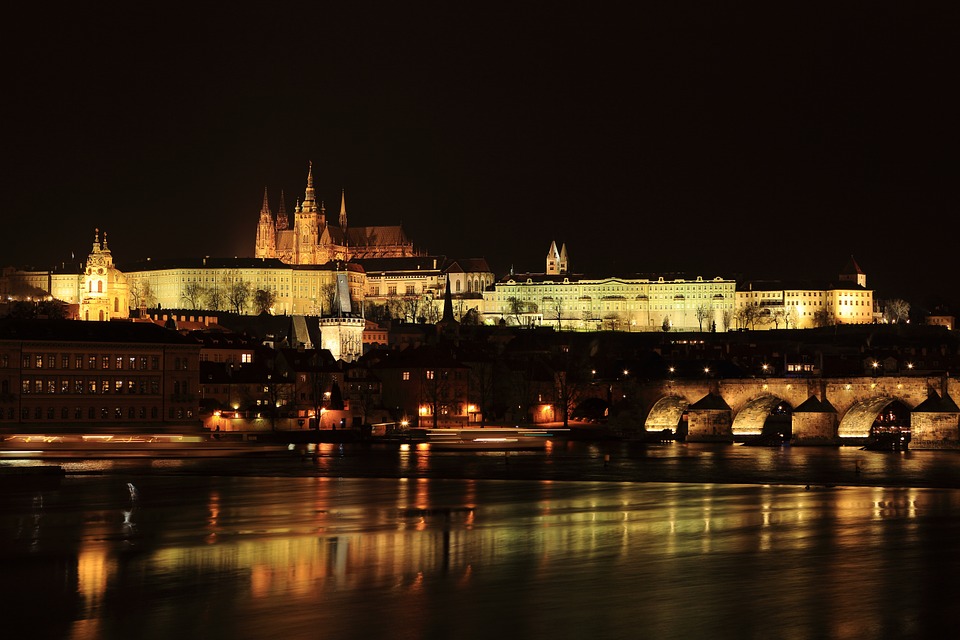
Being much older than the first castle on this list, Prague Castle is a castle was built in the medieval period during the 9th century. It started out as a church and then a basilica and convent, then later became a seat of rulers and presidents.
The entirety of this castle encompasses offices, gardens, palaces and other buildings and is possibly the largest castle complex in the world. The architectural style of Prague Castle is a bit eclectic and includes many different influences, including Gothic and Romanesque.
Bodiam Castle; East Sussex, England
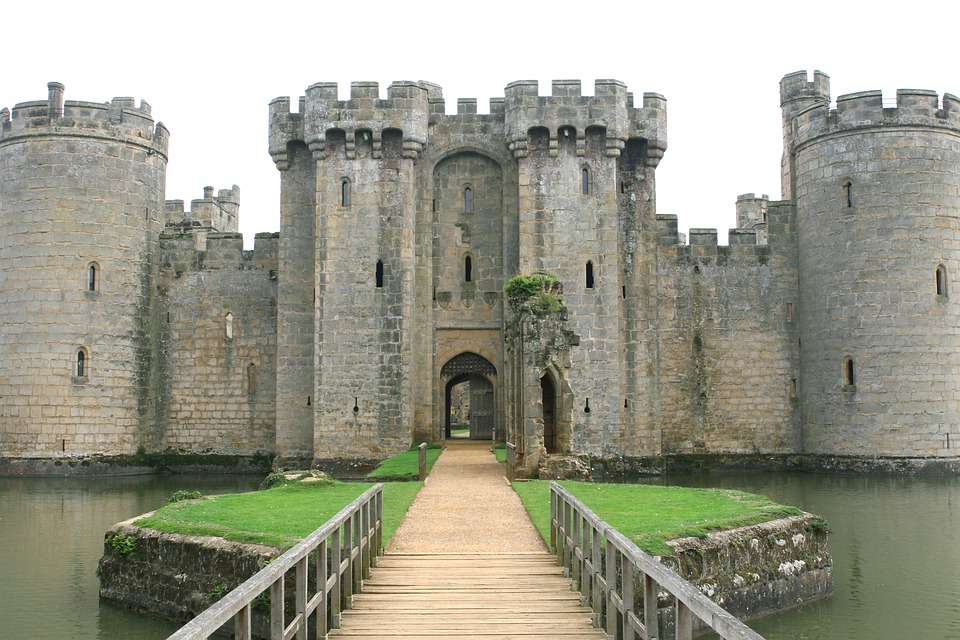
Built in 1385 by Sir Edward Dalyngrigge, Bodiam Castle is a true castle of the middle ages, in the sense that it was originally intended as a fortress to fend off invading armies. It’s architecture is very pleasing to the eye in its symmetry and massive round towers sitting at each corner. The castle exterior is the classic archetypal shape, but unfortunately the interior of the building did not stand the test of time.
This must be the castle (with its battlements along the top) that I envisioned as a child when making sand castles at the beach with my family! Admittedly, the architecture of Bodiam is not particularly spectacular or creative, but I wanted to include at least one literal castle in this article (as a contrast to the others listed which are more like palaces and grand mansions).
Inveraray Castle; Argyll & Bute, Scotland
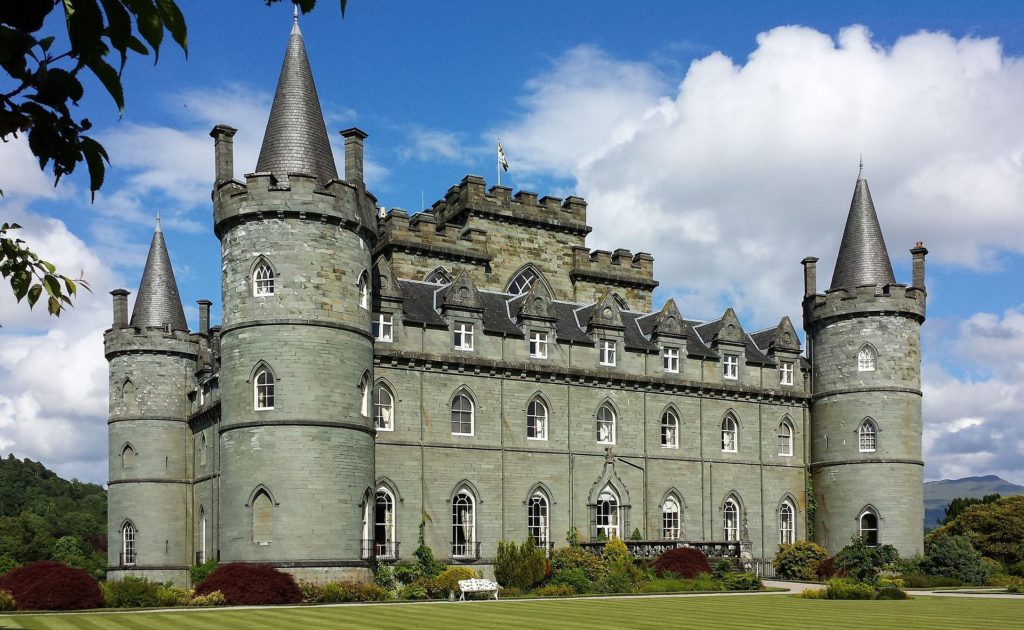
By DeFacto – Own work, CC BY-SA 4.0, https://commons.wikimedia.org/w/index.php?curid=43283799. No changes made to original image file.
Inveraray Castle is another structure that isn’t a castle in the literal sense, but is quite dreamlike and breathtaking in its beauty nonetheless. The greenish-blue hue of the stone gives this building a distinct elegance and enforces it’s fairytale castle qualities. And if I’m not mistaken, I think I saw Inveraray featured in an episode of Downton Abbey…
Inveraray Castle was built during the 18th century by Archibald, the 3rd duke of Argyll, and has a history of being a residence for the Duke and his descendants. This structure was modeled after the Gothic Revival style of castle architecture, and is one of the earliest examples of such. I am so in love with this castle and the unusual color!
Before we go any further… check out this video by Shadiversity to learn more about what a real medieval castle is (and is NOT):
Château de Chambord; France
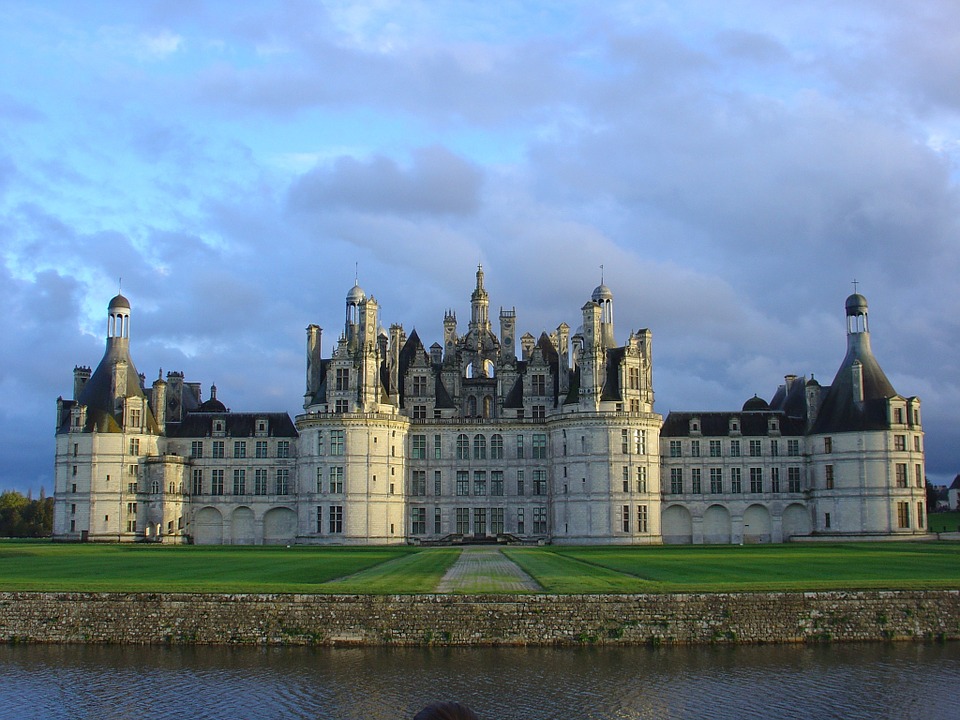
Château de Chambord, or Castle Chambord was built in the Loire Valley in France from 1519 – 1547. It was commissioned/begun by King Francis I and is a monumental structure containing 440 rooms, surrounded by a wall that is 22 miles around. While it is unclear as to who the actual architect was in this case, it is said that Leonardo da Vinci had a strong influence upon the design of this chateau.
This castle is breathtakingly beautiful in its detailed French Renaissance style. While it has some features of a true castle – such as a moat, keep and huge towers – it leans more towards being a palace and probably would not have withstood an assault from an invading army.
Hohenzollern Castle; Germany
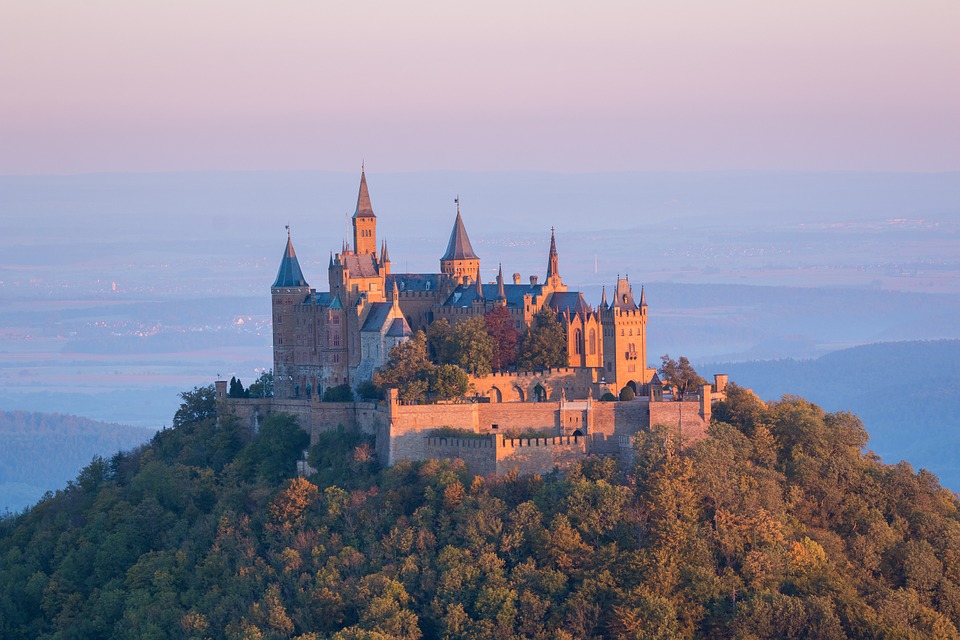
Hohenzollern Castle sits high atop a mountain near the town of Hechingen in Germany. It is the epitomy of gothic revival architecture and is the stuff dreams are made of! The current structure is the third incarnation – as the castle has been built and rebuilt three times – beginning in the early 11th century until 1867 when it was finally completed.
The architect of the final castle was Friedrich August Stüler, whose design is reminiscent of the Châteaux of the Loire Valley (see previous castle). This castle is open year round for visitors and is a feast for the eyes with its sumptuous interior of artworks and design architecture.
Pena Palace; Sintra, Portugal
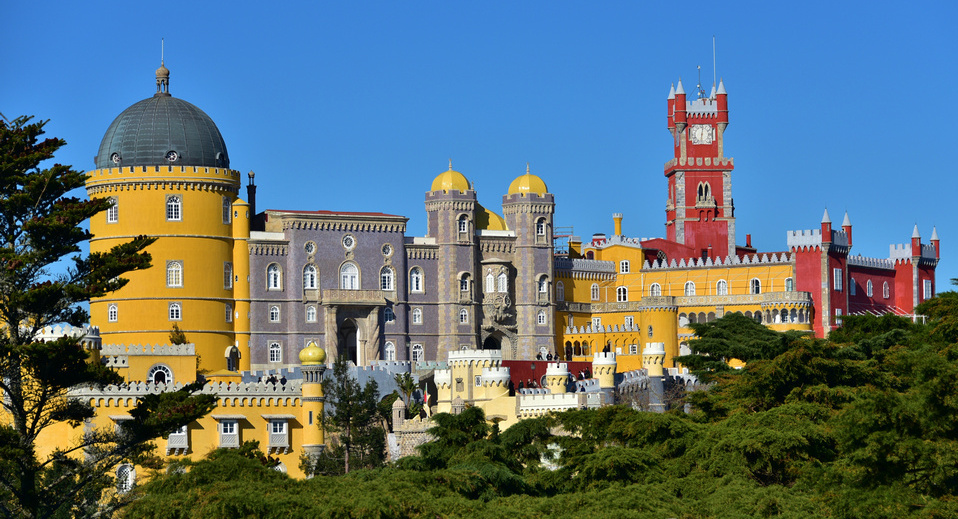
By www.GlynLowe.com from Hamburg, Germany – Pena National Palace – Sintra – Palácio Nacional da Pena, CC BY 2.0, https://commons.wikimedia.org/w/index.php?curid=77936271. No changes made to original image file.
Pena Palace is nestled among the trees high on a hilltop above the town of Sintra in Portugal. During the Middle Ages the palace complex started out as a chapel to Our Lady of Pena, then later grew into a monastery. The palace as seen today was completed around the year 1854 by King Ferdinand, as a summer residence for the Portuguese royal family. It was designed in the Romantic architectural style by Lieutenant-General Wilhelm Ludwig von Eschwege.
In addition to Romanticism, the Palace appears to be a mixture of architectural styles, such as Gothic and Renaissance. The exterior is lushly decorated in bright colors, spires and domes.The interior is lavishly decorated with art work of all kinds, as well as multitudes of sculptures, vases and stained-glass windows.
Himeji Castle; Himeji City, Japan

Although not built in the European style, Himeji is perhaps the most castle-like structure I have mentioned so far. The first and foremost function of Himeji was for defense against invading armies – and it was a home for warlords and their families – thus making it a castle in the purest sense. Originally built in the year 1346 by Akamatsu Norimura, who was the ruler of the Harima Province at the time. This castle was reconstructed a few times until its completion by Ikeda Terumasa in the early 17th century.
Himeji Castle is a shining example of Japanese castle architecture, and is the largest castle in Japan. It was built on a wooden frame, with walls that are covered in a white plaster. The delicate, upswept curves of the exterior and bright white color are said to remind people of a heron spreading its wings, getting ready to take off. Consequently the nickname of Himeji Castle is “Shirasagi-jo”, or the “White Heron Castle”.
The Red Fort; Delhi, India

Another wonderfully creative and unusual castle is the Red Fort of Delhi in India. As with Bodiam Castle, this castle is aesthetically pleasing in its symmetry and was used as a fortress. Constructed of a striking red sandstone, the Red Fort was commissioned in 1638 by Emperor Shah Jahan. Used both as a residence and for defensive purposes, the Red Fort is a true castle, and contains many of the usual features of castles, such as turrets, bastions, high walls, towers and gates.
All of the many buildings and structures that make up the Red Fort are a prime example of the brilliance of Islamic and Mughal architectural styles, with creative influences of the Timurids and the Persians.
Bojnice Castle; Slovakia

Now this is a fairytale castle if ever I saw one! Bojnice Castle combines the best of Renaissance, Gothic Revival and Romanesque architectural styles, accented with striking accents of color along its roofline. It began its existence as a wooden fort in the 12th century and grew over time with many reconstructions until it reached its present form in 1910.
What started out as a fortress slowly morphed into a palace for kings, and today is a very popular tourist attraction. This castle is located in the town of Bojnice, which is northeast of Bratislava, the capital of Slovakia. The interior of the castle is exquisitely decorated and furnished, making this one of the most spectacular castles in the world. Bojnice Castle is visited by hundreds of thousands of people every year, and has been the setting for many festivals and movies throughout the years.
Kilkenny Castle; County Kilkenny, Ireland
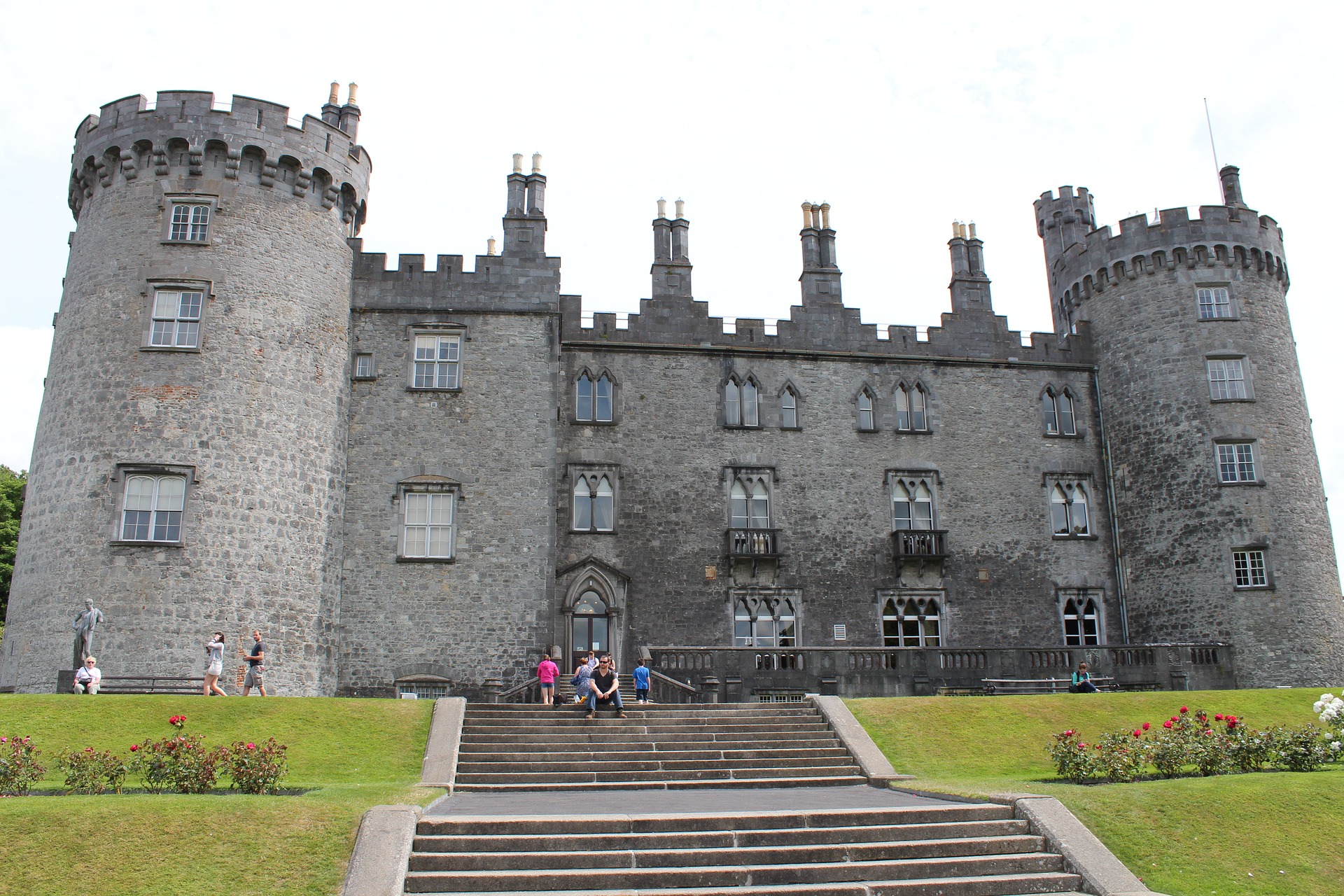
When I hear the word ‘castle’ the first country that comes to my mind is Ireland. With upwards of 30,000 of those magnificent structures to its credit, Ireland should probably be considered the castle capitol of the world! Kilkenny Castle is just one of many awe-inspiring examples of ancient Irish castle architecture, and is nestled along the River Nore.
Construction began during the year 1195 and shortly thereafter Ireland saw the beginning of the Norman conquest. Founded by the 2nd Earl of Pembroke, Richard de Clare, Kilkenny Castle has a long and rich history of inhabitants. These include Lady Margaret Butler, the grandmother of Anne Boleyn, second wife of King Henry VIII of England.
What most likely began as a wooden structure has been rebuilt, updated and renovated several times over the course of many centuries. Victorian art and architectural influences can be seen around and within the castle as it stands today. The medieval-style exterior boasts the markings of a true castle, including a battlemented roofline and high cylindrical towers. With its sumptuous interiors and lush gardens decorated with sculptures and walking paths, Kilkenny remains one of the most popular tourist attractions in Ireland.
For a truly excellent and detailed account of what castles are made up of from A to Z, please check out this article entitled An Illustrated Glossary of Castle Architecture by Mark Cartwright.
Photos are courtesy of Pixabay.com and Wikimedia Commons.
Thank you so much for visiting and reading! Please share this article if you liked it, and come visit us again. 🙂
